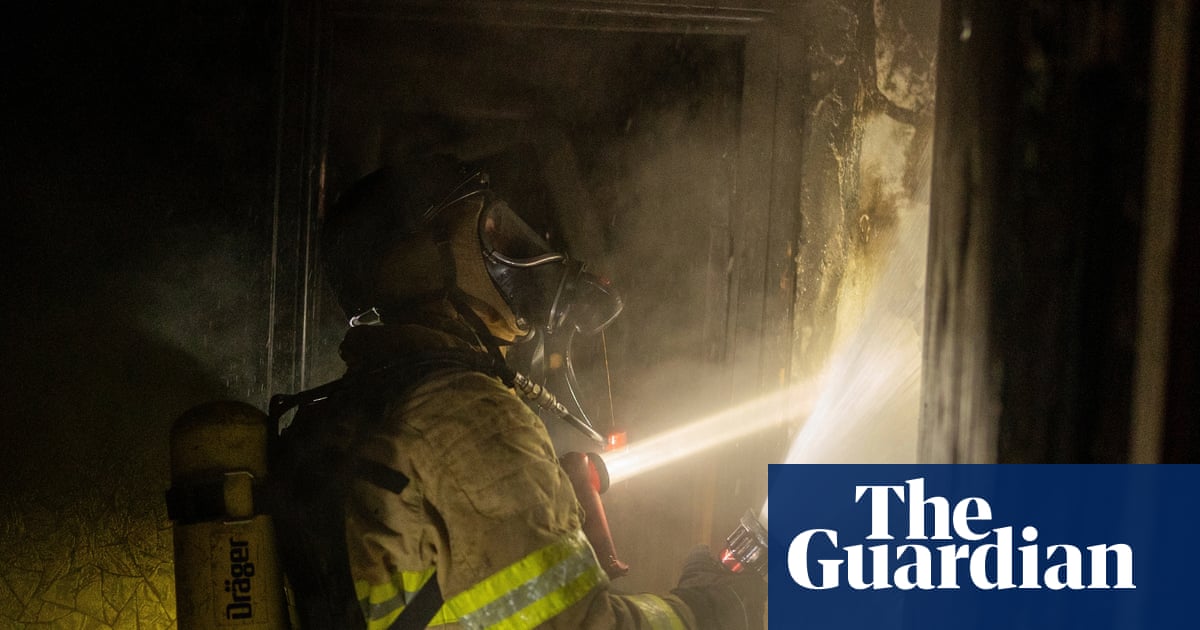Kyiv Faces Fresh Assault Amid Ongoing Tensions and Military Developments

In a troubling escalation of hostilities, the city of Kyiv endured a significant barrage of drone and missile attacks from Russian forces overnight into Saturday. This violence not only triggered widespread fires but also resulted in injuries to at least eight individuals, as reported by the capital’s mayor. Residents throughout the city were alarmed by the sounds of explosions and machine-gun fire, leading many to seek refuge in the underground subway stations, which have become a sanctuary during such violent episodes.
The Kyiv military administration disclosed that debris from the attacks fell across at least four districts of the city. Emergency services responded promptly, and six individuals were reported to have required medical assistance as a result of the assaults. Visuals shared on social media depicted plumes of smoke rising from a damaged block of flats, with flames consuming parts of another building as firefighters battled to control the inferno.
In parallel to this surge in violence, critical diplomatic and military maneuvers were observed on Friday, as Russia and Ukraine engaged in a complex exchange of military prisoners of war and civilians. Ukrainian President Volodymyr Zelenskyy announced that the initial phase of the exchange successfully brought 390 Ukrainians back home, with expectations of further releases unfolding over the weekend. In a reciprocal gesture, Russia’s defense ministry confirmed that it had received the same number of individuals from Ukraine.
Adding to the discourse surrounding the conflict, Valerii Zaluzhnyi, the former head of Ukraine’s armed forces and now the Ukrainian ambassador to the UK, emphasized the necessity for Ukraine to pivot toward a “hi-tech war of survival.” He cautioned that the country should prioritize minimizing personnel losses and refrain from harboring ambitions to reclaim territory occupied by Russia. Zaluzhnyi articulated a strategic approach where the focus is on achieving maximum benefits with minimal economic expenditure, underscoring that Ukraine is presently not in a demographic or economic position to entertain the notion of another full-fledged war. Reports from Peter Beaumont indicate that the Ukrainian military has initiated an expansion of a “drone wall” or “drone line” aimed at countering Russian forces more effectively.
In a significant development for European defense, a €150 billion (£126 billion/$170 billion) loan program designated for rearmament was finalized this week. Under the newly established security action for Europe (Safe) scheme, EU member states will be able to request loans backed by the EU. This initiative is part of a broader €800 billion rearmament plan that emerged after President Donald Trump’s decision to halt U.S. military aid to Ukraine. Once the loan agreement is formally approved next week, EU member states will have six months to formulate plans for defense projects. Andrius Kubilius, the EU’s defense commissioner, remarked to the Guardian’s Jennifer Rankin that “Member states will take those loans and will use them for joint procurement together with Ukraine and for Ukrainian needs.”
In a statement that may indicate future diplomatic intentions, Russia’s foreign minister, Sergei Lavrov, mentioned that a formal set of terms for a peace settlement would be sent to Ukraine once the prisoner swap had been completed. However, he refrained from specifying what those terms might entail. Notably, the Kremlin has yet to display any willingness to retract its maximalist demands in the ongoing conflict.
On the military front, the Ukrainian military’s general staff reported a successful strike on a Russian battery-manufacturing facility located in the Lipetsk region. This facility was purportedly supplying critical components to Russia’s missile and bomb manufacturers. The strike targeted the Energiya plant in the city of Yelets, as communicated via Telegram on Friday. The military asserted that the shutdown of Energiya could potentially impair some of the Russian occupiers’ military equipment and weapons due to a lack of essential batteries.



























